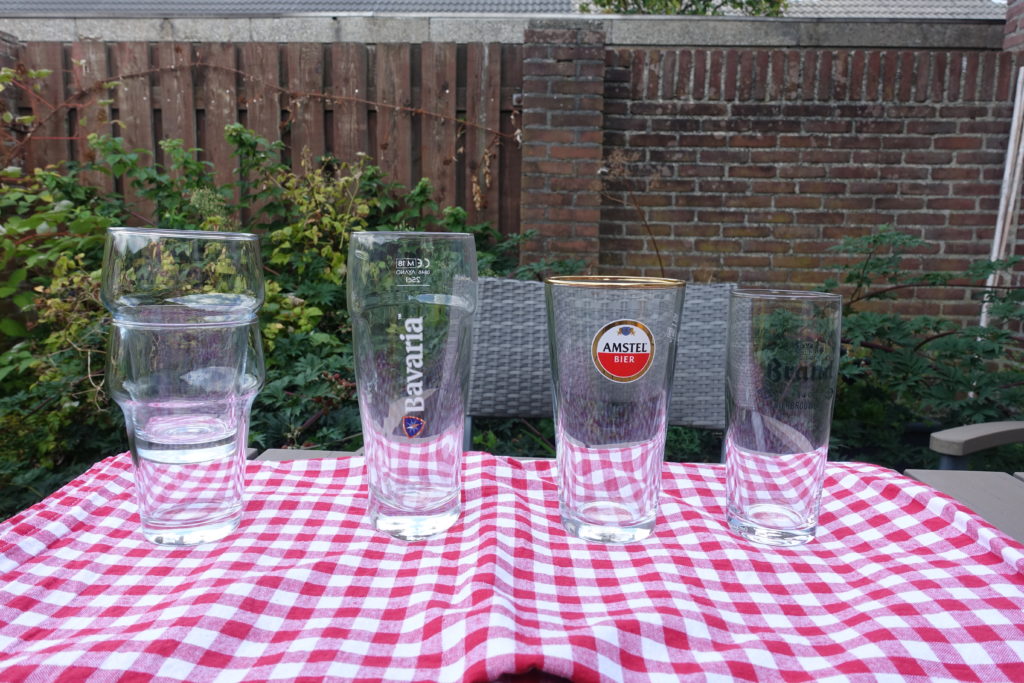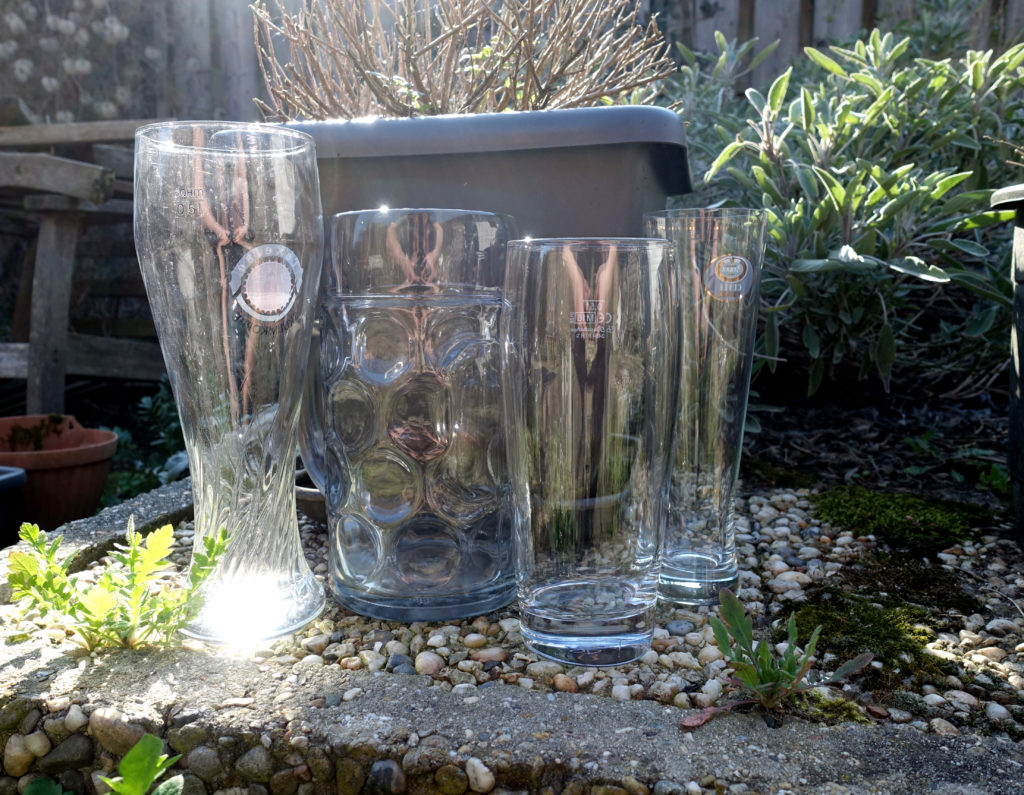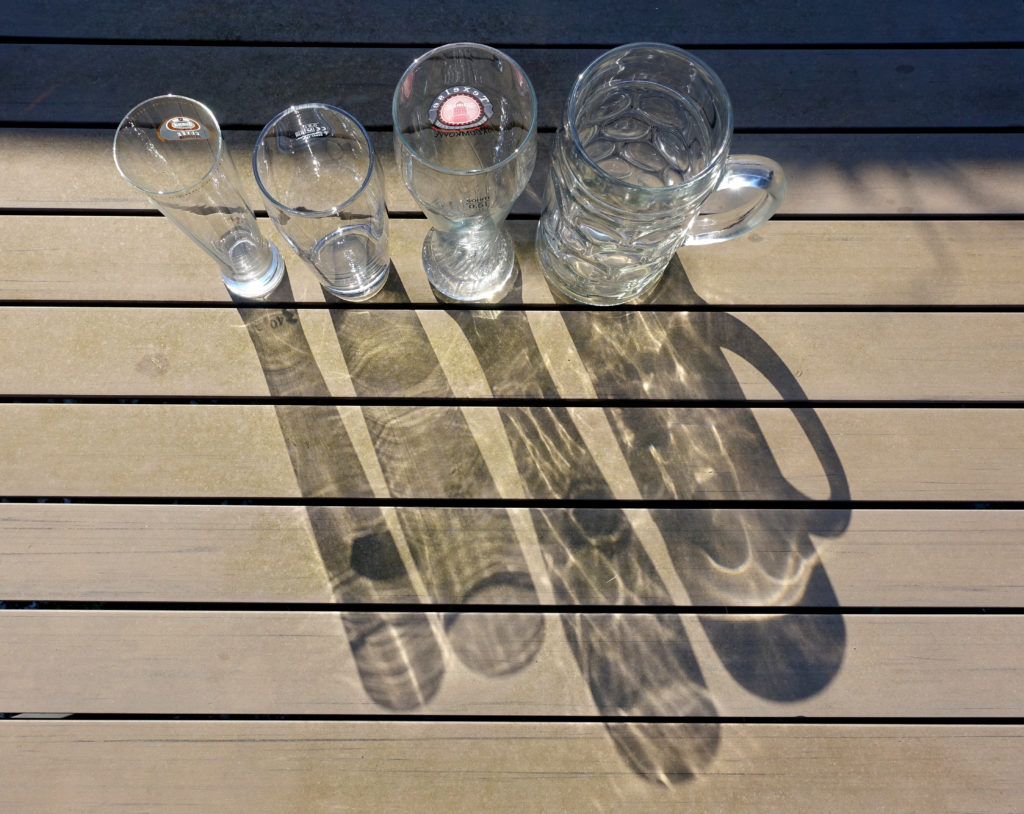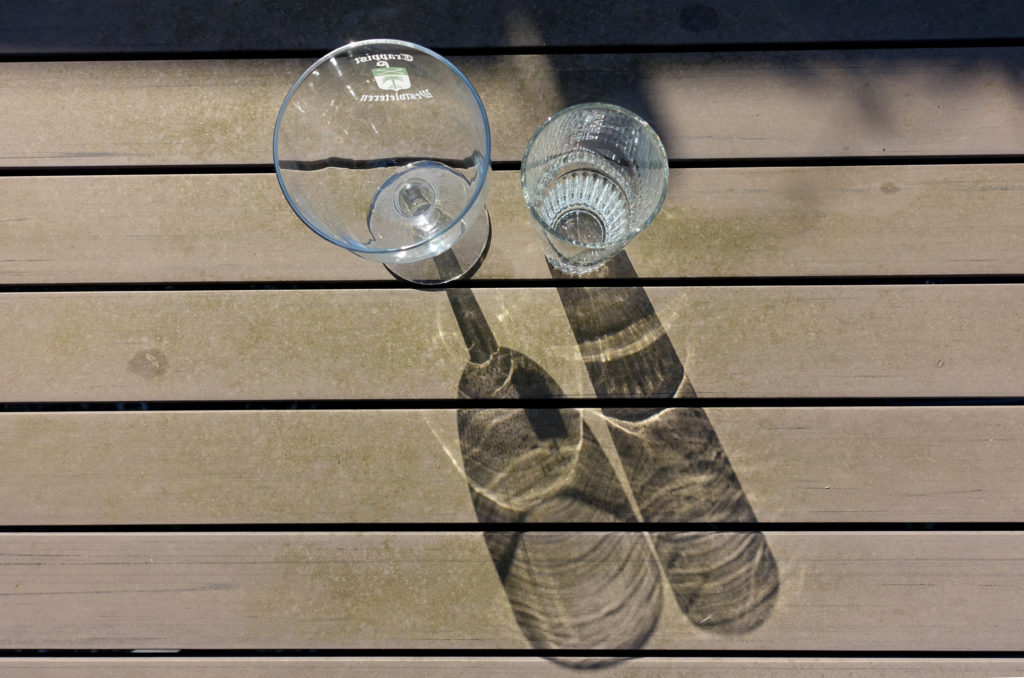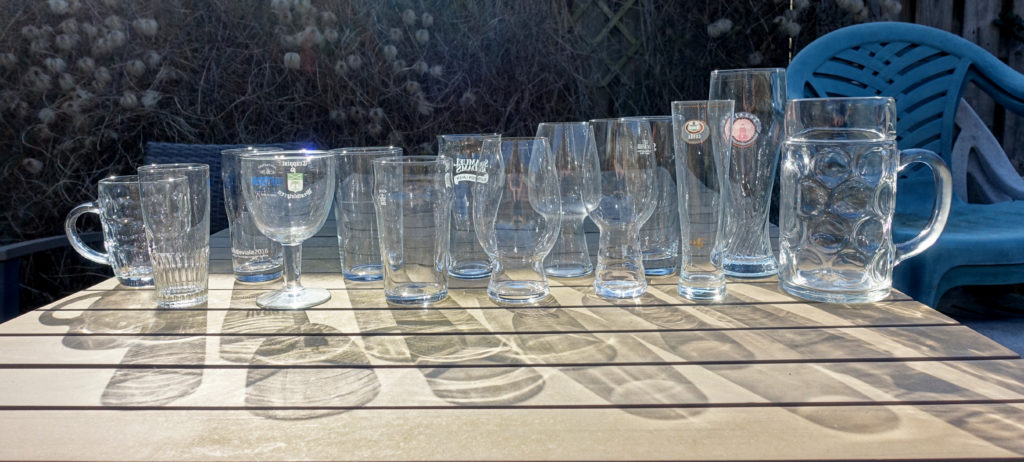Drinkware is so important for the beer experience, it is a whole culture on itself. A lot of the big names and styles of beer have their own specific glass, but there are also some generally used glass types around. Mind you this post is just a first introduction, which means I will come back to this subject one day.
Chances are most of the Dutch readers here never dwelled on when and how they learned it, but as a Dutch person (over 20) they probably have ordered a ‘fluitje’ some time in their life. A fluitje? A fluitje (flute) is a thin glassed, small, almost straight beer glass of 22 cl volume (used to be 18), developed by Brand in the 60s. It’s a small version of the jonker glass, which is 30 cl or 50 cl, but it could also have been inspired by the willi becher. They also have some similarities to the champagne flute, without the stem. The fluitje and the jonker were mostly used for pilsner. They are probably still around and still part of the basic pub or café inventory. Amstel was an advocate for het vaasje with a golden edge. They were not stackable and would break easily, so you see them more and more with a rim on the inside these days, to make them stackable.
Another well known glass in the Netherland is the kraagglas (collared glass). It’s from the family of stackable glasses (stapelglazen) and it’s known as a stapelglas in general as well. It’s obviously very convenient when you serve beer for large masses because they stack, and especially unstack very easily. They are cleverly designed as a small glass with a wide rim which makes it easy to pull them apart again, which is a wonderful invention for high school parties (we were allowed to drink at 16 when I was young) and other parties where you need to fill a lot of glasses quickly. It’s also convenient for the Dutch cheapness, because if you poor a beer in it with two fingers of foam, the percentage of foam is a lot higher than in a normal glass. While it still looks about the right balance, it’s actually more like a Haags bakkie (a very small/frugal cup of coffee).
In and from Belgium you’ll find more ornate glasses. The goblets and chalices are the most used form for Trappists, Abbey beers and other more heavy ales. It adds to the richness of slowly sipping on your alcohol heavy beer while sitting in front of a fireplace in a comfy chair, contemplating the day. Some special Belgian beers have a very distinct own glass, the most striking of which is probably the ‘koetsierglas’ (+stand) from Kwak, which underscores the uniqueness of the beer.

Germany has a lot of general glass styles and names, which are extensively used to this day. They have the maß, a heavy glass for a full liter of beer which is known from German festivities like the Oktoberfest and the Starkbierfests. You can mostly find them in Bavaria, and are a normal, accepted way of drinking a Munich Helles or Munich Dunkle. In Franken they mostly serve beers in half liters. Then there is the stange for kölsch, the altbierbecher for altbier and the weiße glass for weiße. The willi Becher is the most common and general German beer glass. You’ll probably also have heard terms like halbes and seidel in Germany and Austria, I’ll get back to that in another post, because that’s a story in itself.
By the way, did you know that the English pint is bigger than the American pint? An English pint is 0.56 where an American pint is 0.42. In England there was the Dimple Mug. It had disappeared, but is making a comeback because it’s embraced by the craftbeer scene. It probably disappeared in the 80s because it’s not easy to clean and not stackable. But according to CAMRA it has a strong association for English people to a time when ale was still good. It’s strongly connected to the English ale culture, that’s probably why it’s making that comeback.

The shaker glass was the first pint, but it was replaced by the nonic, which has generally the same shape as the shaker, except for the collar which makes it more stackable, the glass won’t glide out of your hand and it’s less breakable, because the rims won’t touch each other when stacked or when cleaning. There’s some tradition in using a shaker for blond beers, a nonic for amber beers and a tulip pint for stouts, although nowadays a lot of pubs just use what they have. Pint glasses used to have a crown sign to show the volume was checked for really being an English pint. These days you’ll find the European CE sign, although I’m not sure if Brexit will change this back to the crown again?
They used to drink from porcelain in England, but that’s a whole other story, involving coins, for some other time.
Which particular glass do you want to know more about?

